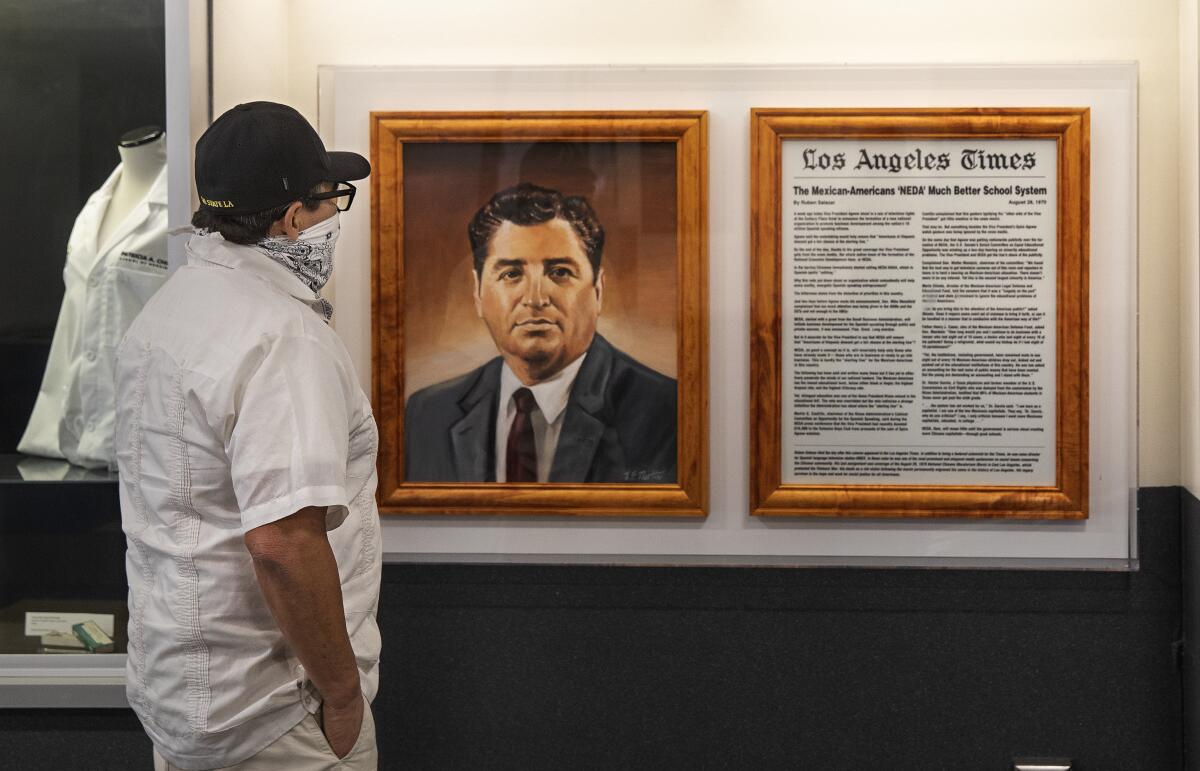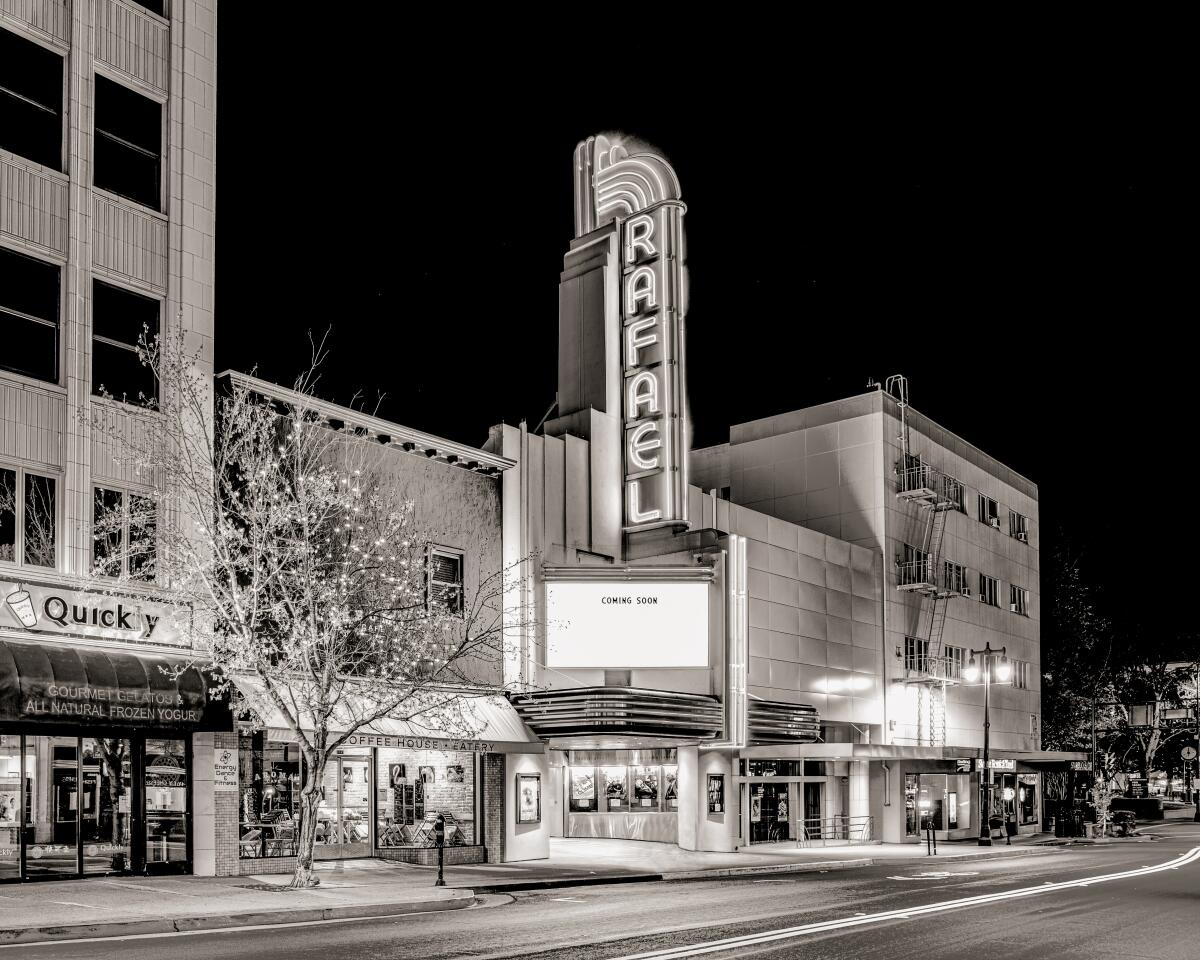Newsletter: Ruben Salazar’s groundbreaking series on L.A.’s Mexican Americans, 60 years later

- Share via
Good morning, and welcome to the Essential California newsletter. It’s Friday, Feb. 24. I’m Gustavo Arellano, and I’m writing from Orange County, where it’s cold and rainy. I’m also a Metro columnist, which means I’m allowed to have opinions. Like:
History is cool.
That’s why the past is not even past, to paraphrase William Faulkner — it’s always on my radar. But even a SoCal history nerd like me doesn’t know it all, which is why I was happy to hear recently from Félix Gutiérrez. He’s a professor emeritus of journalism at USC Annenberg and perhaps the ultimate authority on Latino journalism in the United States, of the English-, Spanish- and Spanglish-language variety.
The profe reminded me that today is the 60th anniversary of a pioneering — but largely forgotten series — on L.A.’s Mexican American community by Ruben Salazar. He’s nowadays remembered as a crusading columnist killed by an L.A. County Sheriff’s Department tear gas projectile shot at his head during the 1970 Chicano Moratorium in East Los Angeles.
But in 1963, Salazar was a reporter three years into his latest gig, with one of the few Latino bylines in The Times. He was already drawing attention for covering Mexican American issues in a thorough, sensitive way for a paper long acknowledged as one of the most anti-Mexican in the United States. At the beginning of 1962, Salazar covered the 1,800-mile frontera from Tijuana to Matamoros in a well-received six-part series.
A year later, he topped himself. On Feb. 24, 1963, the Sunday front-page headline read, “Spanish-Speaking Angelenos: A Culture in Search of a Name.” Over the next week, Salazar examined the Mexican American community around East Los Angeles and Boyle Heights (which he called the “Serape Belt”) at what seemed like a turning point for their place in Southern California.
“This is an attempt to trace where they came from, what they are and where they are going,” the series intro read.
The Times had attempted similar overviews in the past, to patronizing effect. But the genius of Salazar and this series is that his headlines and topics seem ripped from today’s headlines.
“Leader Calls Effort to Aid Mexican-Americans Failure.” “Mexican-Americans Lack Political Power.” “Mexican-Americans Succeeding.”
Salazar hailed what needed to be hailed, and was unsparing in what needed to be criticized. Of a failed effort to elect a Mexican American to replace outgoing Councilmember Edward Roybal, Salazar wrote, “The Mexican-American political ‘piñata’ often crumbles because they can often agree on the worth of Anglo politicians, but rarely on the worth of their own.”
Are your ears burning, Eastside politicos?
The Times revealed in a March 4, 1963, editorial that it hadn’t received so many letters about a series in months. “Our Mexican-American citizens emerge as human beings, stripped of myth and clothed in new dignity after Salazar’s honest examination,” it stated.
Most readers praised Salazar for expressing uncomfortable truths, like Carlos B. Gil of San Fernando, who wrote: “It is easy to crucify the political parties for our plight, the blame lies wholly on us individually and as a community.” Others, like Manuel Lopez of Los Angeles, accused Salazar of needlessly trashing Mexican Americans. He described Salazar’s stories as “outrageous,” “of poor journalistic vintage” and a “Cape Canaveral flop.”
Wow, reads just like my inbox every day!
You can read Salazar’s series in “Border Correspondent: Selected Writings, 1955-1970,” a 1995 collection of his greatest hits edited by UC Santa Barbara professor Mario T. Garcia. And you can read Salazar’s far-too-short run as a columnist in our online archives. Know your Southern California history!
And now, here’s what’s happening across California:
Note: Some of the sites we link to may limit the number of stories you can access without subscribing.
L.A. STORIES

Rare weather conditions are fueling California’s ‘major and unusual’ snow, blizzard warning. And the heavy stuff is supposed to fall today. Los Angeles Times
‘He brought us in closer’: The L.A. journey of Bishop O’Connell. I try not to plug my own columna when I write Essential California, but the life of the slain Catholic bishop touched millions of Southern Californians, as I learned on my 168-mile trip on Ash Wednesday. Los Angeles Times
Hollywood studios plan for a writers’ strike — even before negotiations have started. But will the strikebreakers wear an onion on their belt a la Abraham Simpson? Los Angeles Times
There is more to coffee culture in L.A. than you can ever imagine. I don’t drink coffee, but this is a great overview of the local scene. Los Angeles Times
Check out "The Times" podcast for essential news and more
These days, waking up to current events can be, well, daunting. If you’re seeking a more balanced news diet, “The Times” podcast is for you. Gustavo Arellano, along with a diverse set of reporters from the award-winning L.A. Times newsroom, delivers the most interesting stories from the Los Angeles Times every Monday, Wednesday and Friday. Listen and subscribe wherever you get your podcasts.
POLITICS AND GOVERNMENT
Schiff, Porter in tight race to replace Sen. Feinstein, poll shows; others trail far behind. Commence the Democratic Party circular firing squad, while the California Republican Party clown car crashes into an electoral wall anew. Los Angeles Times
‘It’s a constant battle in terms of inclusion.’ A Q&A about Latino political power in L.A. with Fernando Guerra, a Highland Park boy who’s the longtime head for the Center for the Study of Los Angeles at Loyola Marymount University. Caló News
Temecula leaders are turning right as critics try to slam the brakes. Sorry, Dems, but Temecula’s always gonna Temecula, just like Huntington Beach will always HB. The Press-Enterprise
CRIME, COURTS AND POLICING
In a grisly case that D.A. Gascón said he ‘lost sleep’ over, teen suspect won’t be tried as adult. More fodder for the anti-Gascón crowd, even though the decision came from an L.A. Superior Court judge. Los Angeles Times
Harvey Weinstein is sentenced to 16 years in prison for Los Angeles rape. The Hollywood mogul, who is 70 and in poor health, is already serving a 23-year prison sentence in New York, where he was convicted in 2020 of sexually assaulting other women. Los Angeles Times
Support our journalism
HEALTH AND THE ENVIRONMENT
Amid well-drilling and pumping, calls grow for stronger California water regulation. Activists are urging the state to intervene in five Central Valley areas where they say plans are inadequate to combat chronic overpumping. Los Angeles Times
Flooding frequently closes vital roadways like Indian Canyon Drive — but solutions are finally on the way. Because Palm Springs doesn’t mess around when it rains. Coachella Valley Independent
Are the feds risking endangered salmon for fries and potato chips? Tribal nations say the decision to reduce water flow on the Klamath River “has more to do with potatoes than it does fish.” High Country News
How Fresno County officials ignored water warnings and why taxpayers are paying the price. Thirty years ago, residents told local officials that a boutique subdivision near Friant Dam didn’t have enough water. What happens when the water eventually runs out? SJV Water
CALIFORNIA CULTURE
The art in America’s largest Catholic parish church. St. Charles Borromeo Church in Visalia opened in February and can hold 3,148 worshippers — but how does it look inside? Hyperallergic
This Bay Area marketplace led by immigrant moms offers a global model for incubating food businesses. Amid COVID-19, La Cocina Municipal Marketplace’s community support system kept business going strong in San Francisco’s Tenderloin District. Next City
The story behind that vintage ‘Rainbow Lodge’ billboard near Lake Tahoe. The free arm of the San Francisco Chronicle consistently has a great selection of weird, wonderfully written stories from Northern California, like this one. SFGATE
Free online games
Get our free daily crossword puzzle, sudoku, word search and arcade games in our new game center at latimes.com/games.
AND FINALLY
Today’s California landmark is from Kevin Lozaw, who wants to highlight the Smith Rafael Film Center in San Rafael.

Kevin writes:
The Christopher B. Smith Rafael Film Center (the “Rafael” to locals) is over 100 years old. A beautiful venue in which to present independent films from across the globe.
What are California’s essential landmarks? Fill out this form to send us your photos of a special spot in California — natural or human-made. Tell us why it’s interesting and what makes it a symbol of life in the Golden State. Please be sure to include only photos taken directly by you. Your submission could be featured in a future edition of the newsletter.
Please let us know what we can do to make this newsletter more useful to you. Send comments to essentialcalifornia@latimes.com.
Sign up for Essential California
The most important California stories and recommendations in your inbox every morning.
You may occasionally receive promotional content from the Los Angeles Times.







